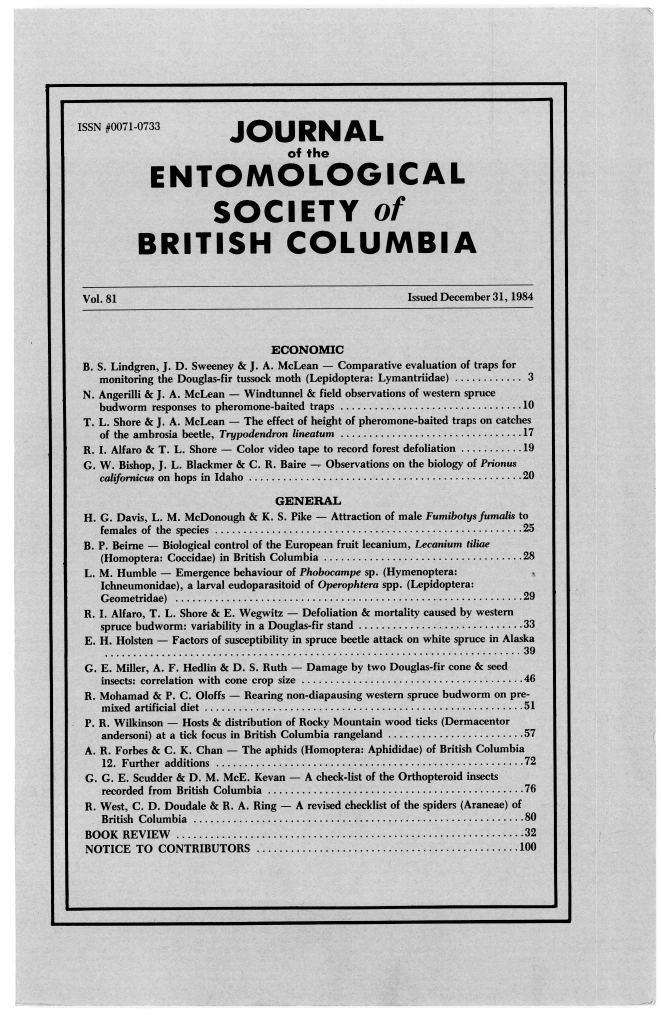The effect of height of pheromone-baited traps on catches of the ambrosia beetle, <i>Trypodendron lineatum</i>
Keywords:
ambrosia beetle, <i>Trypodendron lineatum</i>Abstract
Pheromone-baited sticky traps were suspended at five heights in five locations to determine the optimum height for catching the ambrosia beetle <i>Trypodendron lineatum</i> (Oliv.). Maximum catches were obtained on traps at, or just below, the height of the surrounding underbrush.References
Borden, J.H., A.C. Oehlschlager, K.N. Slessor, L. Chong, and H.D. Pierce Jr. 1980. Field tests of isomers of lineatin, the aggregation pheromone of Trypodendron lineatum (Coleoptera: Scolytidae). Can. Ent. 112:107-109.
Borden, J.H. and J.A. McLean, 1981. Pheromone-based suppression of ambrosia beetles in industrial timber processing areas. Pp. 133-154. In E.R. Mitchell (Ed.). Management of insect pests with semiochemicals: Concepts and practice. Plenum Press, New York.
Lindgren, B.S. and J.H. Borden, 1983. Survey and mass trapping of ambrosia beetles (Coleoptera: Scolytidae) in timber processing areas on Vancouver Island. Can. J. For. Res. 13:481-493.
MacConnell, J.G., J.H. Borden, R.M. Silverstein, and E. Stokkink. 1977. Isolation and tentative identification of lineatin, a pheromone from the frass of Trypodendron lineatum (Coleoptera:
Scolytidae). J. Chem. Ecol. 3:549-561.
Shore, T.L. and J.A. McLean. (In press.) A survey for the ambrosia beetles Trypodendron lineatum (Oliv.) and Gnathotrichus retusus (LeC.) (Coleoptera: Scolytidae) in a sawmill using pheromone-baited traps.
Downloads
Published
Issue
Section
License
Authors who publish with the Journal of the Entomological Society of British Columbia agree to the following terms:
-Authors retain copyright and grant the journal right of first publication with the work simultaneously licensed under a Creative Commons Attribution License that allows others to share the work with an acknowledgement of the work's authorship and initial publication in this journal.
-Authors are able to enter into separate, additional contractual arrangements for the non-exclusive distribution of the journal's published version of the work (e.g., post it to an institutional repository or publish it in a book), with an acknowledgement of its initial publication in this journal.
-Authors are permitted and encouraged to post their work online (e.g., in institutional repositories or on their website) prior to and during the submission process, as it can lead to productive exchanges, as well as earlier and greater citation of published work (See The Effect of Open Access).


